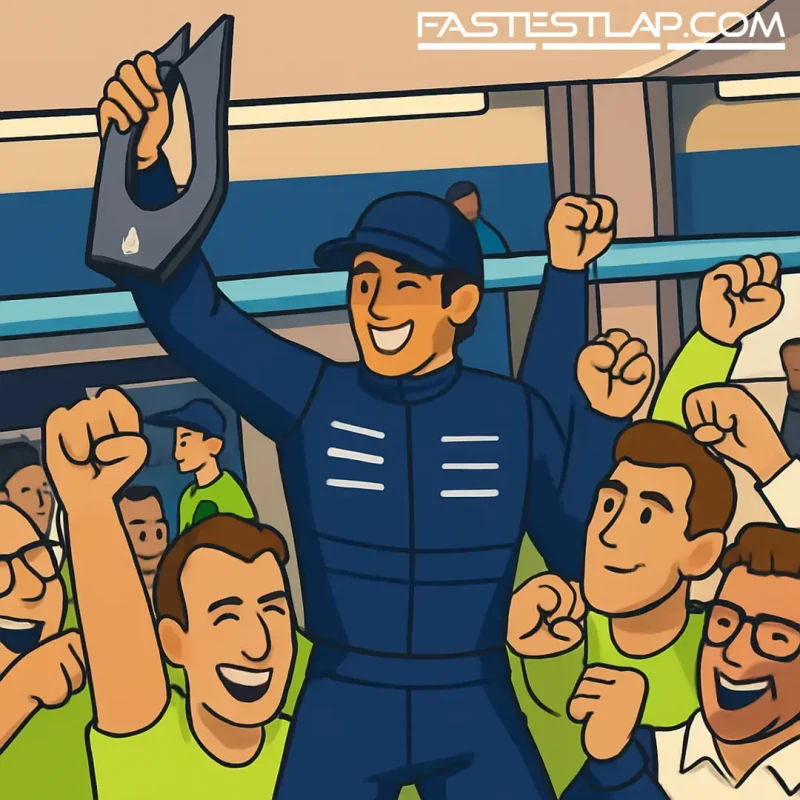Williams got its groove back in Baku — and Carlos Sainz was the spark.
On a weekend that turned qualifying into a demolition derby and rewrote the red-flag record book, Sainz threaded the Williams through the chaos, parked it on the front row, and then brought it home for a faultless P3 on Sunday. It’s his first podium in blue, the 28th of his F1 career, and Williams’ first rostrum since Spa 2021. For a team that’s been rebuilding brick by brick, this was the sound of the scaffolding coming down.
The story started on Saturday, when six red flags shredded the rhythm in Baku and trapped half the big hitters in the barriers. While Oscar Piastri, Charles Leclerc and Lando Norris found walls, Sainz found rhythm. With minutes to go he even sat on provisional pole, only to be nudged by an old friend — ex-Toro Rosso teammate Max Verstappen — who stayed untouchable when it mattered.
Come Sunday, Verstappen did Verstappen things out front. George Russell and Mercedes read the cooler conditions beautifully and executed their way to second. Sainz, though, did what he came to Williams to do: deliver on a big opportunity. He controlled the race around him, covered the threats, and refused to blink. No fluke. No safety-car lottery. Just pace, judgement, and a car that responded when he leaned on it.
“This one means even more,” Sainz said afterwards, comparing it with his maiden F1 podium back in Brazil 2019. And you could hear why. He rolled the dice a year ago, betting on Williams at a time when safer options were on the table. He’s been quick all season — arguably one of the smoothest adapters of the winter’s big driver moves — but the box score didn’t always show it. Near-perfect in Jeddah, bruised by circumstance elsewhere. Baku felt like payback.
The lap-one elbows-down stuff never materialised; this was about lap-after-lap execution. Sainz and Williams never drifted out of their operating window, avoiding the tiny mistakes that so easily turn a good Baku into a bad one. The FW’s straight-line efficiency helped, but the bigger win was how calm the whole operation looked under pressure. For a team that’s worn a few scars in 2025, that serenity matters.
Sainz admitted the key was simply stitching together the perfect weekend — the one he’s been chasing since the season opener. Practice clean, qualifying ruthless, race measured. He started from P2 wondering, like most of us, whether a podium was realistic with faster cars lining up behind. It was, and he made it stick. Only Russell had the legs to chase Verstappen; everyone else spent their afternoon staring at the back of the Williams and getting nowhere.
Important context: this wasn’t just a shiny trophy. It moves Sainz up to 12th in the standings and keeps Williams’ Constructors’ push alive as they fend off Racing Bulls and Aston Martin for fifth. The scoreboard shows 101 points now, and — more to the point — momentum. At this time of year, that counts double.
There’s also something intangibly satisfying about how this one came together. Sainz has always been a driver who thrives on process and detail — the guy who turns up at a new team and quietly raises the floor. In Baku, he raised the ceiling instead. You could feel it in the garage afterwards: not relief, exactly, but confirmation. The project he signed up for is real.
If Saturday’s madness handed him his chance, he earned Sunday on merit. Baku is notorious for trapdoors, and there were plenty of faster packages lurking. He never gave them a look-in. Good straight-line speed, strong braking confidence, smart tyre calls — the old Baku recipe, executed with new Williams efficiency.
Verstappen and Russell took the big headlines, as they often do, but Sainz’s podium might age just as well. When the season’s story gets written, it’ll mark the point where Williams’ 2025 campaign stopped being about potential and started being about results — and where Carlos Sainz’s bet on blue paid out, in full view of the Caspian Sea.




